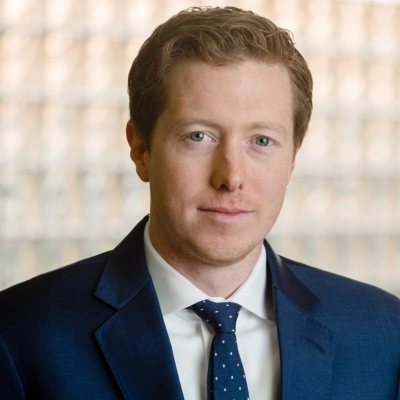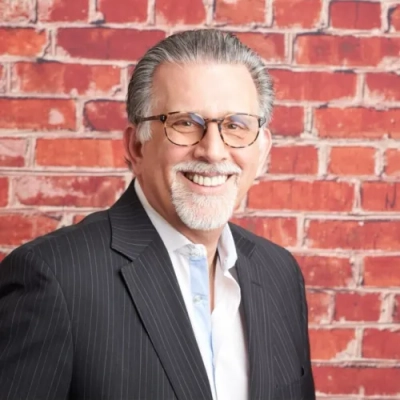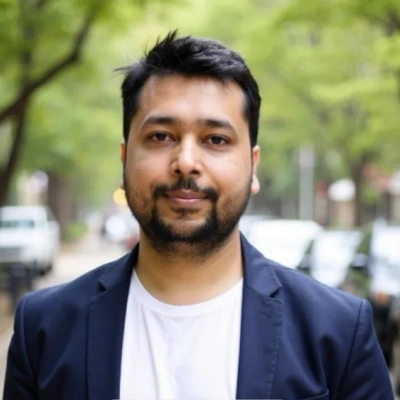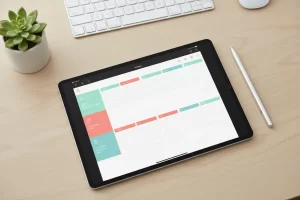14 Different Investment Philosophies Shared by Leaders
Building a successful investment strategy requires more than following trends—it demands proven principles and disciplined execution. This article brings together insights from 14 industry leaders who share their core investment philosophies, covering everything from tax efficiency and risk management to cash flow priorities and portfolio diversification. Whether you’re managing personal wealth or guiding clients, these expert perspectives offer practical frameworks to strengthen your approach.
- Align Portfolio With Purpose and Manage Risk
- Diversify Broadly With Balanced Active and Passive
- Never Fall in Love With Projected Returns
- Examine Downside Protection Before Upside Potential
- Leverage Earned Insight From Your Professional Domain
- Research First, Diversify Always, Maintain Strict Discipline
- Control Variables Through Direct Real Asset Ownership
- Prioritize Tax-Efficient Vehicles and Estate Planning
- Seek Purpose Before Profit, Discipline Over Promises
- Stay Disciplined, Curious, and Never Chase Tips
- Bet on Boring Excellence and Operational Competence
- Focus on Cash Flow First, Appreciation Second
- Execute Your Process Every Single Day
- Use the Barbell Method for Security
Align Portfolio With Purpose and Manage Risk
To me, investing is not about outperforming the next index or chasing trends on financial news. It’s about aligning a portfolio with a purpose. Every investor has a reason behind their capital, whether that’s retirement, legacy planning, or protecting wealth for future generations. My role is to structure investments that support those goals without exposing them to excessive risk.
Risk is not something to eliminate; it’s something to understand and manage. My training in ERISA law ingrained a deep respect for fiduciary standards and prudent oversight. I approach investing the same way I approach retirement plan governance: through careful review, due diligence, and accountability. That includes evaluating downside exposure, regulatory implications, and long-term sustainability.
Asset allocation is not a one-time event; it’s a living framework. I diversify across asset classes to reduce concentration risk, and I continuously assess the portfolio as markets shift, tax laws evolve, or personal circumstances change. I also believe in stress testing portfolios to prepare for worst-case scenarios rather than reacting when they occur.
I do not buy into the idea that investing is about predicting the next big opportunity. Instead, it’s about protecting what you’ve built, growing it carefully, and ensuring it supports your goals over time. Consistency and discipline outweigh speed and speculation.
My philosophy is simple: build with purpose, manage with care, and adapt with integrity. That is how wealth should be managed over a lifetime.

Diversify Broadly With Balanced Active and Passive
My investment philosophy is built on three core principles: broad diversification, strategic asset allocation, and a balanced mix of active and passive management.
I start by diversifying across asset classes because no single investment should carry the weight of your entire portfolio. Diversification helps reduce risk and smooth out returns over time.
Next, I tailor asset allocation based on each client’s time horizon and risk tolerance. Someone in their 20s with decades until retirement can afford more exposure to equities, while someone nearing retirement might need a more conservative mix. The goal is to align the portfolio with the investor’s life stage and financial goals.
Finally, I use a blend of active and passive strategies. Passive investments like index funds offer low-cost exposure to broad markets, while active management can add value in areas like fixed income or international markets where inefficiencies still exist.
This approach isn’t about chasing performance. It’s about building a resilient portfolio that adapts over time and keeps the investor focused on long-term outcomes.

Never Fall in Love With Projected Returns
I’m a CPA and have been managing partner of a commercial real estate firm since 1987, so I’ve seen multiple market cycles destroy people who got greedy. My investment philosophy is brutally simple: never fall in love with your projected returns.
In CRE, I constantly see investors who torture spreadsheets until they show a 15% IRR, then act shocked when an HVAC system dies or a tenant walks away. I wrote about this exact mistake—investors focusing only on yield while ignoring the cash plan for inevitable problems. I’ve watched the “great cupcake concept” wave wipe out landlords who thought trendy tenants were spreadsheets instead of actual businesses that could fail.
The biggest lesson from three decades: know your exact breakeven number before you invest a dollar. When clients do 1031 exchanges, I make them call their accountant first to calculate the *precise* amount they’d pay in capital gains versus what they’re willing to overpay for replacement property. Most people would rather overpay $200K on a building than write the IRS a $150K check—pure spite, terrible math.
My rule is simple: if you can’t afford for the investment to sit dead for 12 months while you fix problems, you can’t afford the investment. I’ve pulled capital calls on investors who didn’t plan for cash emergencies, and those are calls nobody wants to make at 2 a.m.

Examine Downside Protection Before Upside Potential
I run 12 insurance locations across the Southeast, and honestly–I invest like I underwrite policies. I look at downside protection first, then upside potential. When you spend 30+ years seeing what happens when people have zero coverage on their vehicles or businesses, you realize that one uninsured loss can bankrupt someone overnight.
My portfolio is boring by design: dividend-paying stocks in industries I actually understand (insurance carriers, logistics companies that need commercial auto coverage, real estate). I literally invested in two of the insurance carriers we write policies through because I could see their claim-handling processes firsthand–knew they were solid operations before I bought shares. When you’re shopping 40+ carriers daily like we do, you learn which ones are actually profitable versus which ones are just burning cash on bad underwriting.
I also reinvest profits from Select Insurance Group into opening new locations instead of chasing crypto or whatever’s trending. We opened 12 offices since 2008 because I’d rather own assets that generate predictable monthly revenue than gamble on speculation. That sports marketing background taught me championships aren’t won on Hail Marys–they’re won on consistent execution.
The biggest lesson from building this business: liquidity matters more than returns. I keep 6 months operating expenses in cash because I’ve watched too many clients lose their cars, homes, and businesses when they couldn’t make one payment during a rough patch. Can’t grow wealth if you’re wiped out by the first storm.

Leverage Earned Insight From Your Professional Domain
My approach to investing is fundamentally tied to my philosophy on career development: its primary purpose is to expand your range of future choices. Financial planning isn’t just about accumulating a number for retirement; it’s about building the personal runway needed to take calculated professional risks. Whether that means leaving a stable job to start a company, taking a year off for deep skill acquisition, or simply having the leverage to walk away from a toxic work environment, a well-managed portfolio underwrites your professional autonomy. It transforms wealth from a simple measure of security into a tool for intentional living.
Consequently, my core investment principle is to leverage what I call “earned insight.” Many people believe successful investing requires becoming an expert in financial modeling or macroeconomic forecasting. I find it’s more effective to capitalize on the expertise you already possess from your own professional domain. After a decade in a specific industry, you develop an intuitive understanding of its key players, its underlying challenges, and the emerging solutions that have real potential. This ground-level perspective is a formidable analytical edge that analysts watching from a distance often miss.
I once worked with a client, a pediatric nurse, who noticed that a small medical device company had created a tool that dramatically reduced the discomfort of routine injections for children. While the market was focused on larger pharmaceutical companies, she saw firsthand how every clinic and hospital in her network was adopting this device. Her investment wasn’t based on a stock chart; it was based on her deep understanding of a real-world problem and its elegant solution. It makes you wonder how much value is hidden in plain sight, visible only to those with the experience to know where to look.

Research First, Diversify Always, Maintain Strict Discipline
I left Wall Street to focus on financial advising and stock consulting full-time, and my investing philosophy has been shaped by watching both brilliant wins and painful losses over the years.
Here’s how I approach it: I’m not chasing the next hot stock or trying to time the market. That’s a losing game for most people. My philosophy is built on three things: research, diversification, and discipline.
Research first, always. I don’t buy anything I don’t understand. That means digging into fundamentals, reading earnings reports, understanding the business model, and knowing what drives revenue. If I can’t explain why a company makes money and why it’ll keep making money, I’m not investing in it. Too many people buy based on hype or because someone on Twitter said it’s going to the moon. That’s gambling, not investing.
Diversification protects you when you’re wrong. And you will be wrong sometimes. I spread my investments across sectors, company sizes, and asset types. I’m not putting everything into tech stocks or crypto or real estate. When one area tanks, something else in the portfolio usually holds steady or even gains. It’s boring, but it works.
Discipline keeps you from blowing it all up. The market will test you. It’ll drop 20% and make you panic. It’ll rally and make you think you should go all in. I have rules and I stick to them. I set entry points, exit points, and stop losses before I ever buy. When emotions kick in, the rules take over.
I also believe in long-term thinking. I’m not trying to double my money in six months. I’m building wealth that compounds over years. Some positions I hold for a decade. Others I trade more actively if the thesis changes. But I’m never reacting to daily noise.
One more thing: I invest in what I know. I spent years in finance, so I understand financial services, fintech, and market dynamics better than I understand biotech or mining. I stick to my circle of competence and I’m honest about where that circle ends.
The goal isn’t to get rich quick. It’s to get rich slowly and keep it.

Control Variables Through Direct Real Asset Ownership
I don’t do traditional stock market investing–my investment philosophy is putting capital directly into real estate and operating businesses where I can influence outcomes. After 23 years in real estate and construction, I’ve learned that I make better returns when I can add value through management, renovation, or operational improvements rather than hoping a ticker goes up.
My best example: I invested in a distressed commercial property in South Florida that needed a complete roof overhaul. We handled the restoration in-house through our roofing operations, which cut costs by 40% compared to hiring externally, then repositioned the building and refinanced within 18 months. That hands-on approach generated a 34% ROI versus the S&P’s 11% that year–but only because I could control the variables.
I also reinvest heavily into our own companies–expanding Gomez Roofing’s solar division when I saw Florida homeowners facing 15-25% annual electric bill increases. We scaled from 12 to 47 solar installations per quarter in two years because I knew our market intimately and could deploy capital faster than outside investors. The equipment financing we offer customers (up to $250,000 through Hearth) creates recurring revenue streams that beat most dividend stocks I’ve seen.
The downside? Zero liquidity and high concentration risk. I keep 12 months of operating cash for emergencies because I watched contractors go under in 2008 when credit froze. If you can’t actively manage an investment or don’t have deep industry knowledge, index funds make way more sense–but if you can roll up your sleeves and fix what’s broken, direct ownership in real assets beats paper returns every time.

Prioritize Tax-Efficient Vehicles and Estate Planning
I came at investing from a unique angle after spending 20 years as a Series 6 and 7 Registered Investment Advisor while simultaneously running my CPA practice and law firm. That dual perspective–understanding both the tax implications and legal structures–completely changed how I advise clients on their portfolios.
The biggest shift in my philosophy came from working with Arthur Andersen early in my career. I saw wealthy clients get crushed by taxes because they chased returns without considering the legal and tax consequences. Now I focus on tax-efficient vehicles first–like using Roth conversions during low-income years or timing capital gains around business losses. One client saved $47,000 in taxes over three years just by restructuring when they sold investments, which added 8% to their effective return without touching their asset allocation.
For my own money and what I recommend through Visionary Wealth Creation, I prioritize investments that integrate with estate planning. Transfer-on-Death designations and assets held in revocable living trusts avoid probate entirely, saving families 6-12 months and thousands in legal fees. I’ve watched beneficiaries lose 15-20% of inherited portfolios to probate costs and taxes because the deceased never coordinated their investment accounts with their estate documents.
The practical approach I teach small business owners: max out retirement accounts with the highest tax deduction (usually SEP-IRAs or Solo 401(k)s), then build a taxable account using municipal bonds if you’re in Indiana’s higher brackets. Keep enough liquidity outside retirement accounts to fund 24 months of expenses–I learned that lesson watching business owners forced to sell investments at the worst possible time during the 2008 crisis because everything was locked in IRAs.

Seek Purpose Before Profit, Discipline Over Promises
I still remember my first investing mistake. The company looked flawless on paper. Two months later, it could not pay salaries. That experience taught me something no textbook ever could: numbers show the story, but people decide how it ends.
Since then, my investing style has become more personal. I look for purpose before profit, understand risk before reward, and rely on discipline when the market starts whispering promises.
I like companies that stay grounded, earn honestly, and manage cash like it belongs to someone they respect. I read between the lines of their actions, not just their reports. And I have learned that time is the best analyst anyone can have.
For me, investing is less about chasing returns and more about building trust with my own judgment. When the goal is clarity, returns tend to follow.

Stay Disciplined, Curious, and Never Chase Tips
When I’m asked how I approach investing in the stock market or other vehicles, I always come back to the simple philosophy I’ve learned the hard way: stay disciplined, stay curious, and never invest in something I don’t truly understand. I gravitate toward long-term positions because running a service business taught me how unpredictable short-term swings can be. Years ago, I chased a “can’t-miss” stock tip and watched it drop 40% in a week—an expensive lesson that pushed me to start treating investing the same way I treat business decisions: with research, patience, and clear reasoning.
Today, I spread my investments across a mix of index funds, a few individual stocks I’ve researched deeply, and low-risk vehicles that give me stability. I look for companies whose fundamentals feel as solid as the processes I rely on in my own business—consistent performance, smart leadership, and long-term potential. My practical advice is to automate your investing so emotions don’t interfere, review your portfolio quarterly instead of daily, and treat every investment like a partnership. If I wouldn’t trust the people running a company to handle my own money, I won’t put a dollar into their stock.

Bet on Boring Excellence and Operational Competence
I approach investing by treating the stock market like a massive, diverse portfolio of operational competence. I’m not looking for hot trends or volatile growth stocks; I’m looking for stable, well-designed businesses that have eliminated their internal friction points. My investment philosophy is centered on betting on boring excellence.
As an e-commerce owner, my philosophy is “Don’t invest in what you don’t understand.” I stick rigidly to companies where I can clearly explain, on a practical level, how they generate profit—companies with defensible logistics, clear cost management, and superior operational models. I use the same framework to evaluate a stock that I use to audit Co-Wear: Is the company optimizing its systems, or is it just generating hype?
This approach eliminates the emotional gambling that ruins most retail investors. I don’t chase fast returns; I chase demonstrated process integrity. If the company is ruthlessly competent at its core function, the financial returns will inevitably follow. It proves that sustained, quiet operational clarity is the most valuable long-term investment you can make, both in the market and in your own business.

Focus on Cash Flow First, Appreciation Second
I treat investing the same way I treat running projects—slow, steady, and grounded in what I actually understand. I stay away from hype plays and focus on long-term value. For stocks, that means companies with strong cash flow, real products, and leadership that knows how to weather rough markets. I’m not chasing quick wins; I’m building staying power.
Outside the market, I like tangible investments—equipment, property, or anything that can produce income while holding value. The philosophy is simple: cash flow first, appreciation second. I’d rather own something that works for me every month than hope a chart goes up. Patience, clarity, and discipline—that’s the mix that’s kept both my portfolio and my business stable through the swings.

Execute Your Process Every Single Day
When it comes to investing, I’ve seen people overthink it and get lost in theory. The ones who actually make money are the ones who just do the work. They do the wholesale deals, they do the creative real estate financing. They have a process and they execute it every day. It’s not glamorous and feels slow at first, but over time, that’s what works. The grunt work is what matters.
Use the Barbell Method for Security
I use the barbell method. The majority of my money is invested in secure assets like index funds, bonds, and cash. I then use the remainder to place small bets.
It’s a risk slice for businesses, cryptocurrency, and other strange things. It’s okay if it fails. I don’t lose any sleep. It’s a bonus if it works. However, I never combine the two. The trap is assuming that a successful run at risky endeavors indicates intelligence.
Safe money stays boring. Risk money stays small. The whole thing works because I don’t touch it. I keep things automated. I only rebalance once a year. It’s not exciting, but it keeps me in the game long enough to win.









































